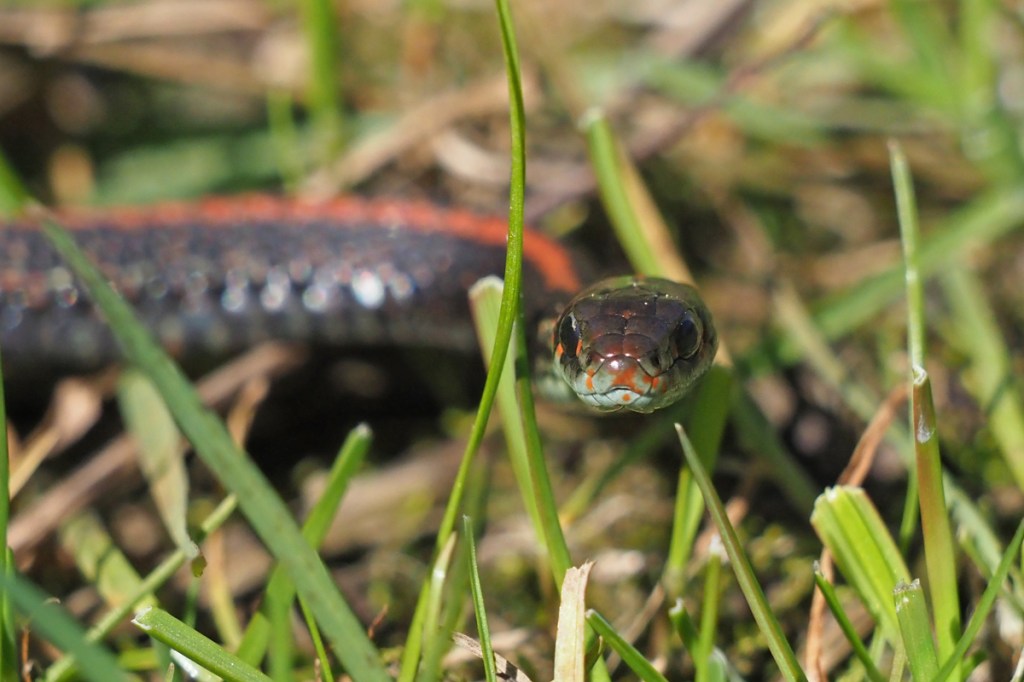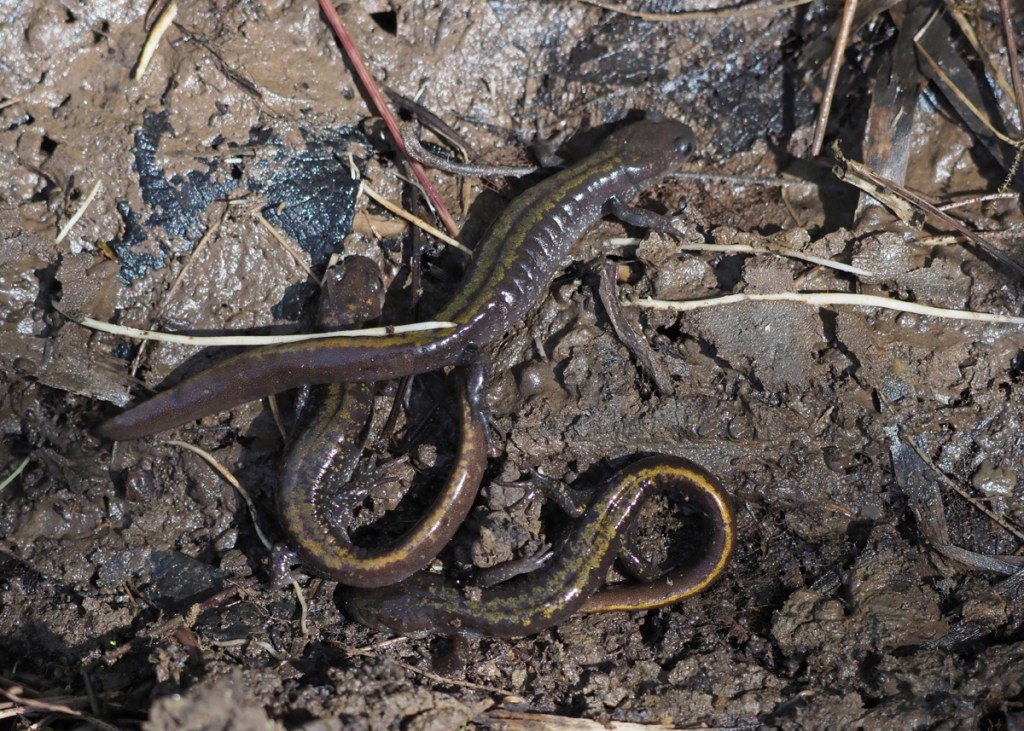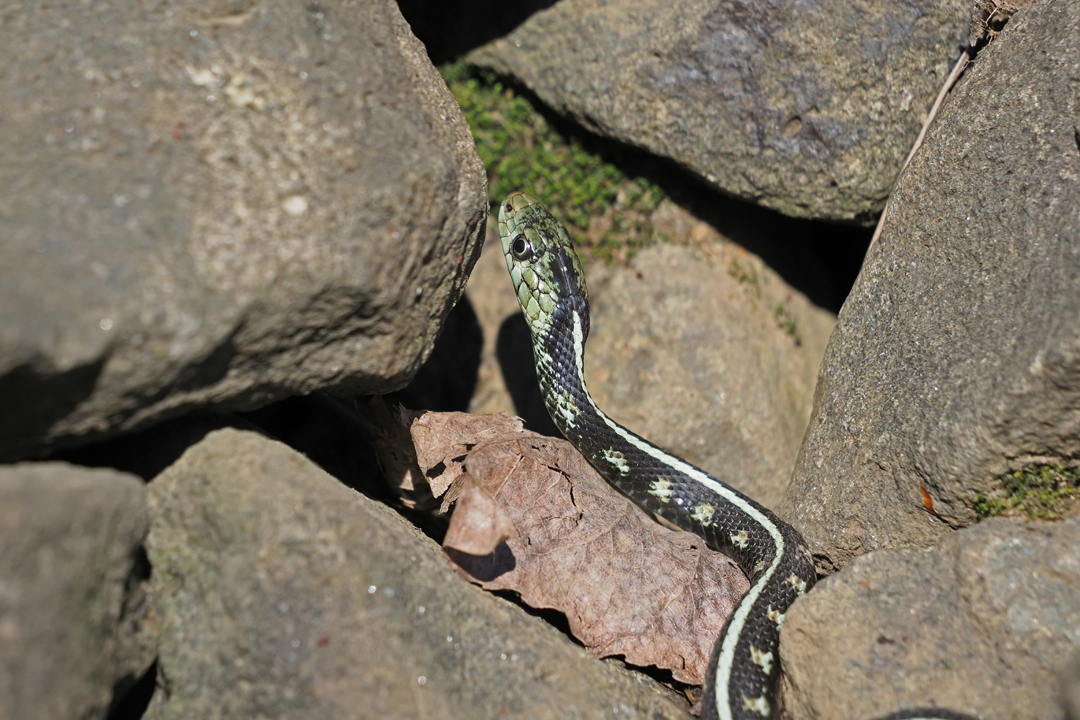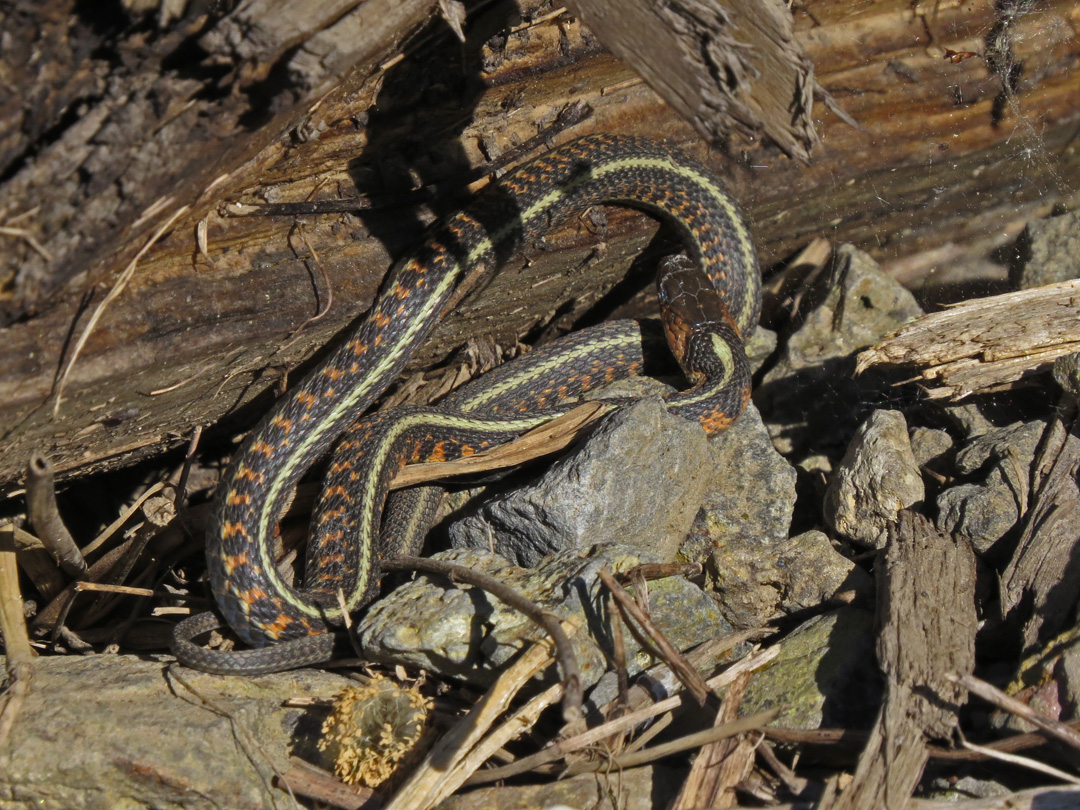While waiting for spring bird migration to pick up, I have been enjoying the local reptiles and amphibians. Here are a few highlights.










Birding will be heating up in the next week, so I will have to start looking up again.
Happy Spring

While waiting for spring bird migration to pick up, I have been enjoying the local reptiles and amphibians. Here are a few highlights.










Birding will be heating up in the next week, so I will have to start looking up again.
Happy Spring
Despite air temperatures in the 40s, the sunshine brought out some signs of spring on a recent visit to Jackson Bottom Wetlands Reserve in Hillsboro.
 Tree Swallows are usually the first swallow species to arrive in spring. When the weather is still cold, they hunt for insects close to the water’s surface.
Tree Swallows are usually the first swallow species to arrive in spring. When the weather is still cold, they hunt for insects close to the water’s surface.
 Some Tree Swallows were already laying claim to the many nest boxes at this site.
Some Tree Swallows were already laying claim to the many nest boxes at this site.
 This California Ground Squirrel was singing (screaming) from a log perch.
This California Ground Squirrel was singing (screaming) from a log perch.
 The sunshine brought out a good number of snakes, despite the cold temperature. These are Northwestern Garters.
The sunshine brought out a good number of snakes, despite the cold temperature. These are Northwestern Garters.
 This is a typical Common (Red-spotted) Garter.
This is a typical Common (Red-spotted) Garter.
 This Common Garter is lacking the red pigment shown by most members of this subspecies.
This Common Garter is lacking the red pigment shown by most members of this subspecies.
 This Long-toed Salamander was hanging out under a big piece of bark.
This Long-toed Salamander was hanging out under a big piece of bark.
Happy last days of winter.
 Jackson Bottom is another site that I can visit during the pandemic, assuming I get there early. The big push of spring migration has not hit, but you can tell it’s so close. Tree Swallows have been back for quite a while now. They are usually perched on the many bird houses at this site, so it was nice to catch a couple actually using a tree.
Jackson Bottom is another site that I can visit during the pandemic, assuming I get there early. The big push of spring migration has not hit, but you can tell it’s so close. Tree Swallows have been back for quite a while now. They are usually perched on the many bird houses at this site, so it was nice to catch a couple actually using a tree.

 The Savannah Sparrows are setting up territory. This would have been a nice shot if I could have caught a reflection in the bird’s eye.
The Savannah Sparrows are setting up territory. This would have been a nice shot if I could have caught a reflection in the bird’s eye.
 This Osprey spent a lot of time preening while I was there. He still looks pretty disheveled.
This Osprey spent a lot of time preening while I was there. He still looks pretty disheveled.
 Anna’s Hummingbird, just high enough that I can’t get a good flash from his gorget
Anna’s Hummingbird, just high enough that I can’t get a good flash from his gorget
 I’m still waiting for shorebirds to show up. Greater Yellowlegs have been the only arrivals so far.
I’m still waiting for shorebirds to show up. Greater Yellowlegs have been the only arrivals so far.
 Some Killdeer have started nesting already.
Some Killdeer have started nesting already.
 Several Common Garters (Red-spotted) were sunning themselves on this rock pile.
Several Common Garters (Red-spotted) were sunning themselves on this rock pile.
 This garter had propped her body up against a log to better catch the morning sun.
This garter had propped her body up against a log to better catch the morning sun.
 I don’t remember seeing Camas at Jackson Bottom before, but they were in full bloom on this trip.
I don’t remember seeing Camas at Jackson Bottom before, but they were in full bloom on this trip.
Happy spring
Spring migration hasn’t really revved up yet, but a recent warm sunny day drew me out to Jackson Bottom Wetlands. I was as interested in herping as I was birding, and some cooperative herps easily filled the void created by relatively low bird numbers.
 This Pacific Chorus Frog (also known as Pacific Tree Frog) was a neat find. I hear this species most of the year, but I seldom get a good look at one.
This Pacific Chorus Frog (also known as Pacific Tree Frog) was a neat find. I hear this species most of the year, but I seldom get a good look at one.
 I normally leave herps that I find in situ, but I couldn’t resist picking up this little Northwestern Garter. The problem with combining birding and herping is that after an encounter like this, your hand smells like garter snake musk. So every time you raise your binocular to your face you get a nose full of snake skank.
I normally leave herps that I find in situ, but I couldn’t resist picking up this little Northwestern Garter. The problem with combining birding and herping is that after an encounter like this, your hand smells like garter snake musk. So every time you raise your binocular to your face you get a nose full of snake skank.
 Here is a much larger Northwestern Garter.
Here is a much larger Northwestern Garter.
 This Red-spotted Garter (a subspecies of Common Garter) was exploring a Red-flowering Currant. I don’t know what he was looking for, but he explored the whole bush before climbing back down.
This Red-spotted Garter (a subspecies of Common Garter) was exploring a Red-flowering Currant. I don’t know what he was looking for, but he explored the whole bush before climbing back down.


 Here is another Red-spotted Garter drinking at a water feature. This individual was at least three feet long.
Here is another Red-spotted Garter drinking at a water feature. This individual was at least three feet long.

I did actually see a few birds on this trip, although they were not nearly as photogenic.
 There are still flocks of Golden-crowned Sparrows around. I would expect them to head north pretty soon.
There are still flocks of Golden-crowned Sparrows around. I would expect them to head north pretty soon.
 Green-winged Teal making friends
Green-winged Teal making friends
The end of March and beginning of April have been cool and wet. Spring is progressing, but seemingly very slowly. Here are a few images from the past week.
 Pacific Wrens are singing everywhere. This bird was at Powell Butte Nature Park in SE Portland.
Pacific Wrens are singing everywhere. This bird was at Powell Butte Nature Park in SE Portland.
 Savannah Sparrows are staking out their territories in the grassland at the top of Powell Butte.
Savannah Sparrows are staking out their territories in the grassland at the top of Powell Butte.

 This Ruddy Duck at Vanport Wetlands is sporting his spring colors.
This Ruddy Duck at Vanport Wetlands is sporting his spring colors.
 This Pileated Woodpecker is excavating a cavity at Tualatin Hills Nature Park. Thanks to Michele for sharing the location of this nest.
This Pileated Woodpecker is excavating a cavity at Tualatin Hills Nature Park. Thanks to Michele for sharing the location of this nest.

 This tiny Common Garter was also at Tualatin Hills.
This tiny Common Garter was also at Tualatin Hills.
 As was this Townsend’s Chipmunk.
As was this Townsend’s Chipmunk.
 Nala is far more interested in fetching sticks from the river than looking at birds. This “stick” in the Columbia is probably her biggest to date.
Nala is far more interested in fetching sticks from the river than looking at birds. This “stick” in the Columbia is probably her biggest to date.
